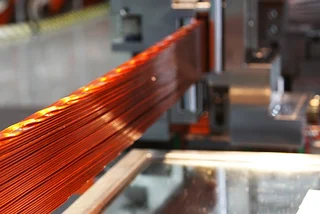Creativity without money is like the sound of one hand clapping, like a flower growing in a galaxy forgotten by sun, or simply like a beached whale. It’s big and beautiful and has nowhere to go. Many great ideas would have languished in theoretical obscurity if not for a timely injection of funds to make them real. Traditionally, patronage of the arts and technological innovation was the playground of James-Bondian magnates or near-sighted government institutions. But a new, more democratic model has emerged in the last couple of years. It’s called “
crowdfunding
PARTNER ARTICLE
” and it’s here to make sure Detroit gets a long-overdue statue of Robocop, with almost 3,000 people contributing over $65000 for such a lofty goal. Another famous crowdfunded project raised almost a million dollars to make wrist watches with Ipod Nano devices. Of course, the Robocop statue and the Nano watches are just two very flashy projects that have received much media attention. Crowdfunding is not only for outlandish ideas – it’s for anything creative (arts or business) you can come up with.

The way crowdfunding works is very much linked to the Internet. A number of well-designed sites allow you to put up a creative project (writing, painting, filming, inventing, music, etc.) and regular people from the world over get to pitch in what they can to make it happen. These funders can be your friends and colleagues or just strangers who find your project appealing. The crowdfunding sites typically take a cut (4-5%) of what you raise, and the credit card processing service takes around 3%, but you keep the rest. It is conceivably possible to not use the established sites and create such a campaign using your own websites and design skills (so as to keep all the funds), but we found that sending fundraising appeals that link to a site like Kickstarter.com produced much more effect. It just looks and feels more credible.
A very common crowdfunding approach is “all-or-nothing” (Kickstarter works like this) – basically you set a date for how long your campaign will last and if you meet or exceed your funding goal by that date, you keep the money. This approach has the benefit of urgency and guarantees to the backers that you won’t end up with not enough funds to finish what you started. When you put up a project, you typically explain what you need the money for, as well as pitch yourself – people need to understand why you are the one to make this happen.
Another approach used by sites like IndieGoGo.com allows you to keep all the funds raised (minus their fees) and makes these funds immediately accessible (via Paypal).
I have first-hand experience with crowdfunding after running a successful campaign on Kickstarter.com a few months ago. We were trying to “kickstart” our documentary film “The Caveman of Atomic City“, which has been in the works for a few years, by raising $10,000 to finish the film. A story of a philosopher who lived in a cave next to a notorious nuclear lab and came up with a theory of time and space to challenge Einstein is not a project that has obvious commercial appeal, but we believed that its artistic and intellectual merits would find support among peers. And indeed, close to a 100 supporters ended up sharing this vision. We ran a 45-day campaign, with the most outreach coming in the beginning and the end, while keeping a steady flow of informative emails and social media posts throughout (Facebook, Twitter).

The basic advice for anyone attempting to raise funds this way would be – believe in your idea and show it. You need to shoot a video explaining what you are trying to do (in our case, we had a trailer of previous footage) and you need to keep writing (and rewriting) messages to everyone you know (and don’t know) clearly explaining what are trying to do and why. The clearer and simpler you are in your appeals, the better. People have short attention spans and need to understand quickly what you want from them. They also often need to be reminded of your purpose. This is when you need to make sure not to cross the line into obscene self-promotion that would lose you the very friends you are counting on for support. Of course, it’s up to you how far you are willing to go to promote your work and to share your dream. We found that people ultimately want to be a part of something worthwhile and are happy to support creative ambitions.
One other reason people might support your project is if you offer interesting rewards. Many sites give you the ability to present “rewards” that you would give to the project´s supporters. You can vary these based on the amount of donation. They could range from t-shirts related to the project, completed DVDs or books, or more creative offerings – like arrows from the African tribe you are going to spend your time with if you get the money. The rewards are not investments, but can also be used to, in effect, sell the product that you are offering to make. This was the case with the Nano wrist watches. When you design your project´s main page, you should give your system of rewards careful consideration, as it could be an additional incentive for people to get involved.
While cool rewards could be especially useful in getting outside people to help a project, it appears to be statistically true that most of the funds raised via crowdfunded projects ultimately come from the people that the project creators know. It is possible to get completely outside people involved but it helps the project to be featured by the sites (Kickstarter chooses to feature certain campaigns they like) or you may overcome your circle by getting press or offering a product that appeals across all spectrums – like Ipod wristbands.
The value of press coverage of your campaign cannot be overstated. We pursued and got a great interview in Film Threat (a leading indie film publication) and also had some letters published in newspapers local to our film. This type of attention made the project feel more official and always helped to draw in more pledges. Of course, you need to make sure to publicize the publicity as soon as it happens. Another outcome in getting press is that it also helps move your project beyond the crowdfunding phase. A letter in a local newspaper alerting citizens to our film’s existence got us great new contacts and a key radio interview. Crowdfunding is not only about the money – the publicity you can raise for your project can also be instrumental in propelling it forward. You can think of it as a period of time during which you are trying to actively engage the universe in an idea that you feel passionate about. The energy you generate is what will make your project a reality.
After the crowdfunding campaign ended, we dived into making the film. What is interesting is that getting so many people involved also imbues you with a sense of communal responsibility. It’s not just our project any more – there’s a sense that it must be finished and finished well for all the people who believed you should make it. Looking at it in this way brings an even greater sense of purpose. You already have an audience – now it’s up to you to deliver the goods. While this may not work for all artists, we find it a great motivation. As such, it’s important to stay in touch with people who have put you in this position. Kickstarter provides an easy way to update supporters on your project’s development. We also made a Facebook page, started a Twitter account, and tied all that together with a webpage, which now features the new footage we shot as a result of the Kickstarter campaign. All these are important tools in keeping the energy of the project growing as in the end of the day – whatever is the medium of your creative outlet, keeping people interested and informed about your project’s life is its real nourishment. Unless, of course, you are a misanthropic genius. In that case, James Joyce, this crowdfunding thing may not be for you.
While there’s no true crowdfunding site yet in the Czech Republic (start it, somebody!), using a site like IndieGoGo.com is easy for anyone in the world as it works with Paypal where anyone can open an account from anywhere. Kickstarter.com is probably the most popular site of this kind in the world, but it is based on Amazon.com’s technology which currently requires you to have a US-based bank account.
The success of crowdfunding sites like Kickstarter inspired an ever-growing wave of sites to open up. While they all have similarities, they often have somewhat different rules in how the funds are distributed and how the sites work. So please make sure to investigate. For example, IndieGoGo.com charges 4% of the money you raise (or 9% if you do not meet your funding goal) + around another 3% is taken by PayPal.
Here’s a list of a few other sites:
http://spot.us crowdfunds journalists while http://www.emphas.is is a fascinating site that offers an opportunity for photojournalists to pitch their projects.
http://rockethub.com (a popular US-based site for all manner of projects)
http://www.8bitfunding.com (video game developers)
http://33needs.com (specializes in businesses with social impact)
There are also sites that cater to larger business projects like startups, connecting entrepreneurs and investors. What is different is that they allow you to offer shares of your project. There are now even live crowdfunding events where people with money vote and pledge money on startups they like.
Here are some of those sites:
https://www.profounder.com (US)
http://www.crowdcube.com (UK)
http://www.seedmatch.de (Germany)
http://www.vencorps.com (Canada)
http://www.wiseed.fr (France)












 Reading time: 8 minutes
Reading time: 8 minutes 



















